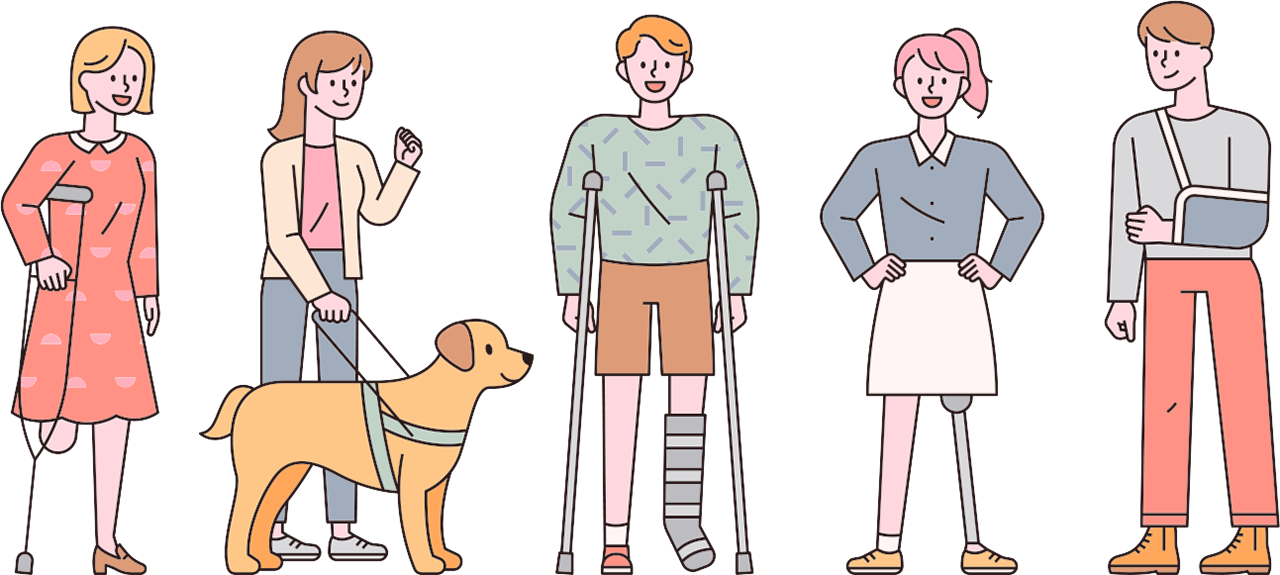
What is a mental disability?
Disabilities are broadly categorized into physical and mental disabilities.
Physical disabilities include impairments of external bodily functions, such as retardation or brain lesions, and internal organs, such as kidney or heart disease.
Mental disabilities include intellectual disabilities, autism, and psychosis. Intellectual disabilities and autism are caused by developmental disorders, while mental disorders are caused by mental illnesses that are usually found in adults.

Characteristics of intellectual disabilities
Intellectual disability is the underdevelopment or incomplete development of intellectual abilities and a reduced ability to manage one’s own affairs and social life. Intellectual disability is usually measured by an intelligence quotient (IQ), which is a score of 70 or lower.
Intellectual disability is often of unknown cause and is characterized by poor attention span and memory, and difficulty with complex money calculations. It can also be caused by prematurity or chromosomal abnormalities (Down syndrome).
Do this when working with people with intellectual disabilities!
People with intellectual disabilities can work in jobs that are suitable for them with the right education and training, and most people with intellectual disabilities can travel to and from work on their own with travel training.
People with intellectual disabilities used to be employed in menial labor and assembly jobs that did not require complex specialized skills. In recent years, they have been increasingly employed as kitchen assistants, caregivers, and machine operators.
• Even with low cognitive abilities, people with intellectual disabilities are capable of knowing and expressing their desires, so you should
respect their wishes. Also, use age-appropriate titles and do not make insensitive remarks.
• Use simple language when talking to people with intellectual disabilities. Give instructions one task at a time, taking into account the person’s
level of understanding.
• Tasks should be tested and repeated several times until familiarity is achieved.
• Repeatedly explain the hours of work, appropriate work attire, and workplace rules.
Characteristics of ASD
ASD is a condition in which a person does not exhibit normal developmental milestones and requires assistance from others due to impaired functioning and abilities. Some common characteristics of people with ASD include avoiding eye contact and trying to stay the same.
Do this when working with people with ASD!
People with ASD may be somewhat limited in the types of jobs they can get because of their disability, but they can be trained to do the job if you take into account their preferences, such as low-change tasks. People with autism are often employed in jobs that do not require complex tasks. In recent years, the range of jobs has expanded to include three-dimensional and kitchen assistants.
• People with ASD can be anxious in unfamiliar places, with unfamiliar people, and in unexpected situations. They need plenty of explanation or
rehearsal beforehand.
• If you need to make adjustments to routines, explain them well in advance and allow for practice.
• People with ASD often lack the skills needed for everyday life. Consider providing assistance when using public transportation and counting
money.
Characteristics of mental disorders
There are many different types of mental disorders, including schizophrenia, bipolar affective disorder (manic depression), recurrent depressive disorder, and narcolepsy. Some disorders are lifelong and disabling, while others are short-lived and temporary.
Here’s what to do when working with people with mental disorders!
Most people with mental disorders who are looking for a job do not have any specific pathology; with consistent medication and stress management, they are fully capable of working.
Understanding the symptoms of taking medication (drowsiness, dazedness, etc.) and providing job instructions accordingly will not cause major difficulties.
• Create an atmosphere where it is natural to take medication while at work. Short breaks in between are helpful.
• Allow the mentally disabled person to have a drink if requested, even if food and drink are prohibited, as psychiatric medications often cause
thirst.
• Consider adjusting their work hours if they need to leave the office for medication or treatment.
• It’s also helpful to have someone they feel comfortable talking to about workplace difficulties or concerns.
* Confusing terms
– Crippled disorder: A type of physical, not mental, disability. It includes disabilities such as amputations, joint disorders, dysfunctional limbs,
and deformities. There is no impairment in intelligence or cognition.
– Mental retardation: Same as intellectual disability. However, the word “retarded” is no longer used since the 2007 revision because it can have
negative connotations.
References: Article 2 of the Enforcement Decree of the Act on the Welfare of Persons with Disabilities, Korea Disability Employment Portal,
Korea Disability Employment Agency




